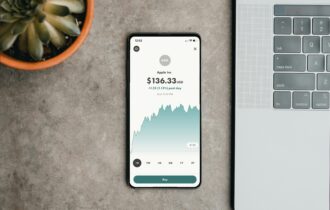
Aegon Strategic Bond

Aegon Strategic Bond fund has a very broad and flexible remit. It invests globally and is a true strategic bond fund that can change its positioning very quickly when necessary. The managers combine longer-term strategic positions with short-term ideas. Alexander has been named as a manager on the fund since 2017 and Colin Finlayson was named co-manager in 2018.
Our Opinion
Fund Managers
Fund Managers

Colin Finlayson, Co-Manager Colin Finlayson is an investment manager in the Fixed Income team, specializing in global government bonds and relative-value analysis. He co-manages the absolute return bond fund and strategic bond funds, as well as several pooled pension funds. Colin joined the industry and the firm in 2000, after earning a degree in Economics and Finance from the University of Strathclyde. He is also a CFA charterholder.

Alexander Pelteshki, Co-Manager Alexander Pelteshki is a portfolio manager on the multi-sector portfolio management team, specializing in top-down asset allocation, global bonds, and corporate credit. He co-manages the strategic bond and core plus strategies. Before joining the firm in 2014, Alexander was a lead equity analyst at ING Financial Markets, focusing on the banking sector, and previously worked as an equity trading analyst at UBS Wealth Management. He has been in the industry since 2007 and holds a degree in International Business Management from Dickinson College and an MBA from Erasmus University in Rotterdam.
Fund Performance
Risk
Company Description
Talking Factsheet
Quote from the Fund Manager
There’s always two questions: should I buy it and will I be able to sell it? You shouldn’t buy anything that you won’t be able to sell at some point

Colin Finlayson
Co-Manager
Investment process
The managers’ philosophy is that markets are inefficient and that an active approach can add value. Therefore, Aegon Strategic Bond fund is very active and high conviction. It is also flexible and nimble, adapting its positioning quickly if needed.
The managers begin with an assessment of the global macro environment. This meeting takes places once a month and they are supported by the global fixed income team. Everything will be considered such as the relative attraction of government debt versus investment grade versus high yield versus emerging market debt. The team will also consider politics and geographic preference, as well as particular themes.
The ranges of exposure to different asset classes are: government bonds 0-100%; investment grade 0-100%; high yield 0-40%; emerging markets 0-40% and cash 0-10%.
The team’s macro views are populated with ideas from a 50-strong team of global research analysts. The emphasis is on the sustainability of future cash flows. ESG factors are fully integrated into the investment process. Credit research analysts include ESG information in their analysis by combining data from third parties with their own internal research. ESG integration includes four steps: identification – identify specific ESG and non-ESG factors specific to the company and industry; assessment – assess the materiality of each factor materially affecting the issuer’s fundamentals; incorporation – incorporate the fundamental impact into the credit assessment; and integration – portfolio managers integrate analysts’ recommendations.
Once the portfolio is populated, it is tested by the independent risk team. It is stress tested and run through a number of different simulations. This helps the team to optimise the portfolio to target the best risk-adjusted returns. Risk analysis is received daily, and the fund is constantly monitored.
The fund does not trade foreign exchange and is fully hedged back to sterling. The managers make use of derivatives to quickly change positioning and manage risk. However, where a view can be expressed with a physical bond, this will be the preference. The fund’s income is distributed quarterly.
Risk
Given this is a strategic bond fund, its positioning can vary greatly in a short time period and the team uses derivatives to quickly alter positioning. The fund typically has between 90 and 150 holdings to ensure good diversification. Historically, the fund has been a bit more volatile relative to its peers.
ESG
ESG - Integrated
The global research analyst team will include ESG factors alongside its analysis of more traditional credit metrics when looking at each investment. This is designed to answer three key questions: what are the potential impacts on business fundamentals and will this affect creditworthiness; are these risks reflected in valuations or not; and would engagement create improvement in the long-term value of the business. The scoring of this is performed through a proprietary model, which ranks credits on a scale of 1-5, with 1 being those leading their industries in responsible practices, to 5, where the ESG risks will likely have a material impact on a business’ prospects, which is not priced into the current valuation. This score is used by the analysts and managers to help make a judgement as to whether they wish to own the security or not. The analysts will use a variety of inputs to populate this, ranging from Aegon’s internal Responsible Investment team, company financial reports and some external data sources.







